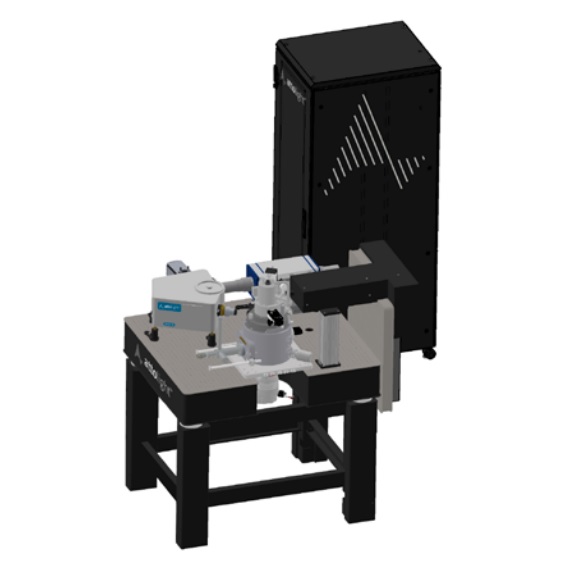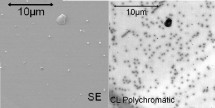Overview
The Grammont 2172 is a nanometer resolution spectroscopy instrument, based on a disruptive technology invented by Attolight and called quantitative cathodoluminescence, that tightly integrates a scanning electron microscope and a light microscope into one tool. It requires zero alignment, features zero photon loss and houses a CCD detector for those who need to deliver high resolution quantitative luminescence maps reproductively.
In the semiconductor industry, the Grammont 2172’s offers an unmatched solution for defect identification in Gallium Nitride (GaN)-based devices such as power transistors and LEDs. It can perform failure analysis or speed up process development.
In scientific and industrial research, the Grammont 2172‘s ability to clearly map spectroscopic features on nanoscale objects such as nanoparticles, nanotubes, quantum dots, defects or dopant inclusions, gives researchers a unique insight into the physics of their material. Applied to materials such as phosphors, compound semiconductors (e.g. ZnO, GaAs or GaN and its alloys), or high-band semiconductors (e.g. BN or diamond), the Grammont 2172 boosts researchers’ productivity and opens new areas of investigation.
The system was built from the ground up to achieve superior cathodoluminescence performance without compromising on the electron microscope performance. First of all, the light microscope and the objective lens of the scanning electron microscope are carefully intricated so that their focal planes match each other. Then, the light microscope is machined with sub-micrometer precision in order to reach perfect achromatism, high numerical aperture (N.A. 0.71) and constant and superior photon collection efficiency over a field of view of 300 μm, so that quantitative cathodoluminescence benchmarking becomes possible for the first time. Finally, the electron microscope operates at low electron beam energy (3–10 kV) for enhanced cathodoluminescence resolution.
The Grammont 2172 serie is the first entry modular product among the fully integrated CL Attolight solutions. The system is comparable to the Allalin 4027 but with a simpler design to minimise cost: it can be easily upgraded for a much higher speed of detection, helium temperature cooling, near-infrared sensitivity or, ultimately, picosecond time-resolution.
Key Benefits
– Short time to result/Easy: Sample alignment can be done within seconds by any user, no prior spectroscopy experience is needed. Operating the Grammont 2172 is intuitive thanks to its context-based user interface
– No compromise: simultaneous generation of a SEM image and a hyperspectral CL image with no degradation of the electron probe size
– Quantitative: the photon collection efficiency is constant over a large field of view of 300 μm with 0% photon loss due to vignetting in polychromatic mode; a mapping of 300 micron is performed without any displacement of the specimen: cathodoluminescence results are reproducible and comparable
– High light collection efficiency: a numerical aperture of 0.71 (f/0.5) makes low emission cathodoluminescence a reality
– Upgradable: the core components of the Grammont 2172 are the same as for the Allalin 4027 and the Rosa 4634; it is possible to upgrade anytime to another system by adding various modules.
– Optical hub: for integration of the Attolight CL instrument in a larger spectroscopic system

 SingaporeSG
SingaporeSG ChinaCN
ChinaCN MalaysiaMY
MalaysiaMY IndonesiaID
IndonesiaID MyanmarMM
MyanmarMM



